Your household plot is a dream for many gardeners and gardeners, as it is a huge field for activity. Flowers, decorative plants, lawn and fruit trees are always the main part of the plot, making it bright and attractive. However, many owners always try primarily breaking the beds for their small garden, where you can grow a variety of vegetables and greens. This will always allow you to have fresh and useful vegetables that are much more appreciated than shopping.
Content |
Onions are an integral part of any garden, as this fragrant vegetable is used by hostess every day for cooking. Today, gardeners use a large number of onions of Luke, possessing the most different characteristics. Most often, dackets are used for their landing. However, it is much easier to grow seed onions on its own, using ordinary seeds of the onion bows for this.
In this article, consider the features and general description of the seed onion, as well as note the main characteristics of the most popular varieties of this vegetable. We give important landing and care nuances, as well as all stages of grown seed onions and its storage features.
General description of the seed onion and the peculiarities of its cultivation
The onion is one of the most useful types of garden crops, which is grown in almost every garden and on each site. Today it is impossible to present a cooked dish without adding the onion bow, which makes meals more fragrant and juicy. This vegetable is often used not only in cooking, but also as a medicine for colds and to strengthen immunity. It is difficult to meet a person who would have at least once grown onions on her garden or on the windowsill. The onions of all the species grown and eaten by a person are more than 90%, which confirms its popularity and demand.
Seed onions to this day is considered a little mysterious culture, as the scholar is unknown the origin of this vegetable. In the natural environment, the bow is not found, it is a cultivated plant that can be found only in the naisudual sites. The seed onion is valued for all its parts edible. This also applies to feathers, and repka. It is so called the bulb of this variety, from which the general name of the species occurred is the onions.
Description of the seed onion:
- Seed onions is an annual, two-year-old or long-term vegetable culture, which refers to a large onion family.
- Seed bow is the onions grown from seeds. To get full-fledged big bulbs, there are three sowing methods of seeds. In the first case, the onions of the seeds receive from the seeds, and the next year they grown out of it. In the second method, the seeds are seeded very early to seedlings, which is further planted into the ground. The third option is to evry onion seeds under winter. All these options allow gardens to get seed onions.
- Most often, the owners of household plots use the onions of the north to get large bulbs. These are small bulbs that were obtained from seeds.
- The full cycle of the development of the seed onion consists of several periods, for example, seeding - the cultivation of Luke Sevka - Luke Planting Sevka - the cultivation of full-fledged bulb-repka - selection of samples - getting seeds. In some grades of the seed onion, this cycle is 3 years old, there are varieties that can give seeds for the second year and even in the first year after seeding.
- Luke seeds are formed on a long blur, which can grow to 1.5 m. They ripen in inflorescence, consisting of 200-700 small flowers, which form an umbifide form of inflorescences. All flowers are blocked by rows, thanks to which the scene itself resembles a ball.
- The flowering of the seed onion begins in June or July, and in August there is a scene of the inflorescence - a triangular seed box consisting of 6 black seeds in a dense shell. For the color of this shell, the seeds of the onions are often called "inkub."
- Luca seeds retain the germination for 2-3 years, however experienced gardens recommend soaring fresh seeds to get a greater percentage of germs.
- In the first year, the seeds can be obtained from the seeds, the size of which on average is 1-4 cm. Usually, the onions of the navigation is usually divided into several fractions in the magnitude of the bulk. All of them 4: fine fraction - Diameter Sevka 8-14 mm, Average fraction - 14-21 cm, a large fraction - 21-24 mm, a large fraction - 24-30 mm, the largest fraction - 30-40 mm.
- A full-fledged bulb derived from seed can reach 15 cm in diameter.
- The bulb of the seed bow consists of outer dry scales, which can be of a different shade, which depends on the specific grade of the seed onion: brown, golden, yellow, purple, red or white. Under the upper scales are internal, more fleshy and juicy. They can also be different colors: white, pinkish or purple.
- All scales are attached to the bottom - a shortened stem, in the sinuses of which the daughter of the bulbs can be formed. This indicator depends the ridiculousness of the grade of the seed onion. The minority varieties are distinguished, medium-paste and multi-charts.
- The seed onion is characterized by good resistance to cold and frosts, so it can perfectly withstand temperature differences.
Variety of seed grade varieties
Today, the legislator of the fashion in the cultivation of the seed onion is Holland, in whose territory several large specialized farms are engaged in the cultivation of high-quality seeds of the Republic of Luke, and onion and onions Sevka. All seating material supplies almost all gardens in Europe and more of Russia. In addition, farms on the territory of Russia are also engaged in the removal of seeds and onions Seeds to grow seed onions, however, due to the inability to clearly observe the conditions for planting and storage, such a planting material is less qualitative. Consider the most popular seed grade among gardeners.
- Seed onion "Stuttgarter Rizen". This is one of the most popular high-yielding grades of Luke, the ripening of which from growing sevka before the appearance of a full-fledged bulb comes in 66-73 days. Adult bulbs of this seed bow large, flat-round form. The weight of one repka can be 150-180 grams. The bulbs are covered with light brown scales, to taste acute. This variety is well kept, resistant to some diseases and shortages.
- Seed bow "Sturon". It is a slightly improved variety "Stuttgarter Rizen", which was widespread in Europe. This medium grade is distinguished by high yield, bulbs are large, rounded shape, yellowish brown shade. The weight of one repka can be an average of 100-150 grams. Such a bow has a pleasant slightly sharp taste. It is intended for sowing in the northern regions, it is perfectly stored. Not used for growing green onions.
- Bow "Centurion". It is a new selection variety "Stuttgarter Rizen". Most often it is recommended for growing on a breech in a two-year culture from Sevka. It has good yields and almost 100% seed germination. The bulbs in the form are elongated, the weight of one can be approximately 100-150 grams. The taste of onions is sharp or peninsula. The variety is resistant to most diseases, is perfectly stored for about 8 months. Used to obtain onions Sevka, but not for growing greenery.
- Sort of seed onion "Hercules". This is a hybrid mid-grade, which boasts one of the largest bulbs. The weight of one repka can be on average 150-160 grams. You can search this variety throughout Russia, it gives a good harvest everywhere. Vegetable culture is perfectly stored and has resistant to many Luke diseases.
- Grade "Red Baron". Another pretty popular grade of the seed onion of the early ripening time. Refers to the red varieties of Luke and has a pleasant sweet-sharp taste. The bulb rounded shape weighing from 40 to 150 grams. Can multiply by several options: seeds, spit and seedlings. It has good yield and stable maturity, the variety is well stored.
- Seed bow "Exhibition". It is considered one of the most damned varieties of Dutch selection. In the process of cultivation there may be bulbs weighing up to 500 grams. The shape of the bulb is elongated, flakes of golden brown color. The taste of onion juicy, very gentle and sweet. Most often used for salads. It is recommended to grow with direct sowing seeds, without the use of seedlings.
- Grade "Centaur". It is a medieval and high-yielding grade. The bulbs in the process of cultivation turn out rounded and rather dense. If we grow with a reckless way, then the weight of one bulb can be approximately 100 grams. With a seaside method, you can get a bow weighing up to 200 grams. The variety is perfectly adapted to temperature drops, well stored. The taste of the bulbs is sweet and very pleasant.
Preparatory work on the cultivation of seed onions
Seed onions is grown from seed in several ways, each of which is characteristic of their own characteristics. Most often, gardeners grow seed onions in a two-year period, when the onions of the north are obtained in the first year, and for the next year, full-fledged bulbs are grown. Sowing Luke seeds preliminarily requires a thorough preparatory work, which must include the selection of high-quality seeds and a certain grade of the seed onion, selection on its garden of the optimal place for sowing and high-quality soil processing. All this will allow in the future to get a rich yield of delicious onions.
Selection of planting material and seed grade
- You can buy seed onions in any garden store. However, it is pre-need to decide on a specific variety of vegetable culture.
- All onions are conditionally divided into southern cultivation and northern cultivation. Therefore, if you live in the northern regions, then you should not purchase seeds of varieties for the southern regions, as in the end you can not get repka at all.
- The grade of the seed onion is also selected according to taste qualities, by the number of adventures, the duration of storage and resistance to diseases and pests. All this must be taken into account in order to further get delicious and healthy bulbs.
- Most often, experienced gardeners are recommended to buy Luca seeds of Dutch selection, which have excellent taste. However, in recent years, many Russian grades of seeded onions have been derived, which have proven perfectly when growing in the northern regions.
- Luca seeds can be obtained independently, separating several flowers to the samples and waiting for the full ripening of seeds in the flower.
Selection of seed seeds
- When choosing a place for sowing seeds, it is important to take into account what vegetable crops were grown in beds. Seed onion grows well after potatoes, early cabbage, tomato, cucumbers, legumes. The bow must be planted on the same place no more than once every three years.
- The seed onion prefers to grow in an outdoor sunset, which is completely covered with straight sunshine.
- Do not land seeds on the beds in shorts and in the shade, the bow can not climb at all.
- Experienced gardeners recommend landing the seed onions next to carrots, since these cultures together are greatly struggling with diseases and pests.
Selection and preparation of soil for seed onions
- Seed onion prefers to grow on fertile, loose and air soils.
- Ideal for this vegetable culture, sandy and drifting soils that have good moisture intensity and moisture permeability.
- In the fall at the selected place in advance begin to prepare the soil. To do this, it must be swapped to a shovel to a depth of about 20 cm, removing all weeds and roots at the same time. After that, fertilizers and the soil are added.
- In the spring, the plot is leaving again, only to a depth of 10 cm and well loose it. After that, the beds are formed and prepared for the sowing of the seed onion.
Cultivation of seeds from Sevka
Planting the seed onions on the north is considered the best way to get a full-fledged harvest of well-ridden bulbs. Used for sharp and peninsula seed onions. This cultivation option takes two years and has a number of its nuances.
Sowing seeds on the bow on the bow in the first year
To get a high-quality and healthy bow of the north, it is important to choose the seeds properly and prepare them before sowing. This will further get a good planting material that is used to grow onion.
- Sowing seeds on the bow of the north is made in early spring in about april, since this vegetable culture can withstand a slight decrease in temperature.
- It is important to prepare the seeds of the bow in advance, since they are covered with a durable shell that impedes rapid germination. If you do not process the planting material, then the first shoots will appear only after 3 weeks.
- Experienced gardeners are recommended about a week before sowing, soak the seeds in the methylene blue solution or in the payroll solution. In the glass container, place the seeds and fill them with a solution so that it is above seeds for about 1 cm. The seeds in the solution are withstanding about a day, after which they are laid out on the burlap with a thin layer. You can use gauze. From above they are covered with another piece of burlap. Seeds must constantly be wet.
- A week later, all the seeds of the bow should be bled, after that they can be sown.
- Some gardeners recommend two more weeks to hold seeds in the cold for their hardening.
- Next prepares the garden 1 meter wide width. The soil should be loose, since the sprite of the bow in such an earth will be easier to break through.
- The seeds are seeded with a ribbon method with a rider at 10-15 cm. Singing you need quite thick, approximately 10 grams of seeds per 1 sq.m. Close seeds are needed to a depth of 1.5-2 cm, while it is important to withstand the distance between the seeds equal to 1-1.5 cm.
- Then the seeds are neatly close and the soil is compacted.
- Further, it is recommended to climb the bed to peat and cover the film before the appearance of the first sprouts.
Caring for seeds of seed onions
- To get a high-quality bow of the north, it is important to correctly care for sowing in the first year.
- First of all, special attention should be paid to the removal of weeds and soil loosening. Weeds can interfere with onion spons to germinate, so they need to be removed if possible. The same applies to the crust on the surface of the soil. If the ground is not regularly loosened, the bow will not have time to climb on time, which will affect the sizes of Luke Sevka in the future.
- The second important point of sowing is to break. The first time the seedlings thin when they appear 1-2 leaves. It is necessary to proper in such a way that a distance of 1-2 cm remains between the sprouts.
- When the seedlings appear 2-4 leafs, a second thinning is carried out, during which it is necessary to leave the distance between seedlings in 4-6 cm. This is necessary in order for the bow of the onions of the navigation to be formed to a normal size. If the breaking does not spend on time, the north gets very small.
- From May to June, in the first half of the growing season, it is necessary to regularly water the landing, it is necessary to do it approximately 1-2 times a week, subject to the absence of precipitation.
- Also, many experienced gardeners are recommended for about 1 week before harvesting is harvested by crops with potash fertilizers. This will help the Sporth better to mature.
Cleaning and drying onions Sevka
- Cleaning Luke Sevka usually falls on the second half of June or at the beginning of August. It is important to remember that the earlier matures the bow of the north, the longer the time remains on its correct drying.
- If you are afraid to miss the cleaning time, focus on the leaves that should be sealed half.
- The bow neatly pulls out and folds up with a thin layer right on the garden, where it will dry out for 3-4 days. Regular onions need to turn over so that it dried evenly. During the rain of the sevok, covered with a film or is transferred under the canopy.
- At the next stage, the drying of the seeds is transferred to the dry, ventilated room, where it should be about 2 weeks. During this time, the pen must dry, which allows it to be easily removed.
- At the same time, all damaged bulbs are removed.
- Before preparing Sevka to storage, the entire seating material is recommended to warm up for 8 hours at 35-40 degrees.
- At the recent stage of preparation for the storage of the north, it is recommended to sort the magnitude of the heads.
How to store seed bow before disembarking
- It is important to properly follow the rules for the process of storing the seed onion, as the quality of Sevka will depend on this and its germination.
- In how to store seed onions, there is nothing complicated. It is important to pre-calibrate the seawards, since the size of the bulbs will depend on the storage technology.
- Small north can be stored in bags or baskets indoors with a temperature of 1-2 degrees above zero. If the temperature is sometimes increasingly rising, the Sporth is not scary.
- The middle and large onions of the north must also be stored in a bag or basket, but at a temperature of 18-19 degrees.
Looking onion Sevka and care for it
- The following year, the onions of the north are planted on the bed around in the second half of May.
- During the preparation of a seed bow to landing, it is important to pour them with warm water and hold a little in it.
- When landing, it is important to observe the distance between the individual bulbs, which should be approximately 6-8 cm. Between the rows, leave 20-25 cm.
- It is necessary to plunge the seaws about 1-1.5 cm, which will ensure very rapid germination.
- In the future, it is important 2-3 times a month to loosen the soil on the bed and remove weeds.
- It is recommended to spend two junk feeders for the season.
- Watering for landings is needed only in the absence of natural precipitation. When watering, try not to direct water pressure on the bulbs.
- It is also important to delete all the arrows generated. It must be done below the swollen over the neck. Then the arrows will not appear on this bulb.
- Cleaning onions grown from Sevka must be carried out at the end of August.
Cultivation of seed onion with a seaside way
It is possible to grow seed onions not only with the help of Sevka, but also by obtaining seedlings of seeds of vegetable culture. Consider the nuances of how to plant a seed seed on the seedlings.
- The grown seed onions across the seedlings are no worse than Luke Sevka, while he perfectly agrees to cleaning and stored perfectly.
- First of all, it is necessary to prepare containers with a height of more than 10 cm and fill them with nutrient soil.
- Luca seeds are seeded at the end of February or in early March.
- The planting material can be sown into the grooves to 1 cm deep or dispel over the entire surface of the soil.
- From above, the seeds are covered with a thin layer of the Earth and are poured by a pulverizer, after which the container is covered with a film and put in a warm place with a temperature of 22-25 degrees.
- The first shoots appear in 2 weeks when the containers already need to move into a bright place with a temperature of 12 degrees. If there is no such place, the room must be regularly ventilated.
- Before planting, seedlings are twice the mortar of mineral fertilizers.
- In the open ground, seedlings are planted in early May. This usually happens on the 60th day of the growth of seedlings when there are 3-4 leafs on them.
- When disembarking, the distance between the seedlies should be 8-10 cm, and between the rows 25 cm. After landing, the onions are abundantly poured, which speeds up its survival rate.
Cultivation of seed onion early sowing seeds in the ground
- Another option to grow seeds is an early seeding in spring or under winter.
- First of all, it is important to move the seeds and remove bad and not allowed. It can be done by hand or with a sieve.
- Before sowing, the seeds are soaked in solution and germinate in burlap, as described in the cultivation of Luke Sevka.
- Sowing in the middle of April. If you decide to make a tie sowing, then it is recommended to hold it before the onset of cold weather.
- Seeds should be dry, they close to 1.5 cm depicure.
- After landing, the beds are mounted with peat or humus.
- With the onset of spring at about 3-4 degrees, the seeds will start germinate.
Seed onions is one of the most popular vegetable crops that can be grown independently using only onion seeds for it.

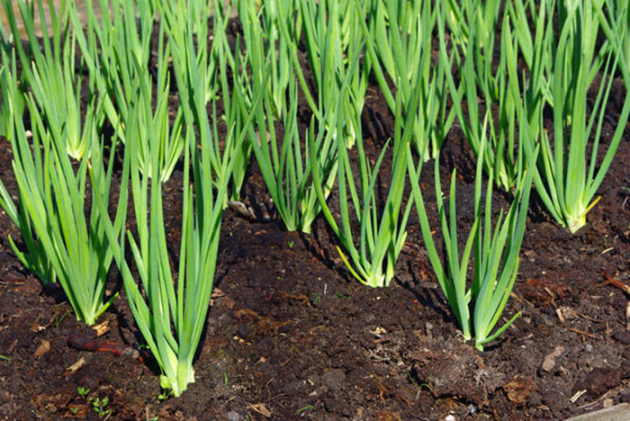

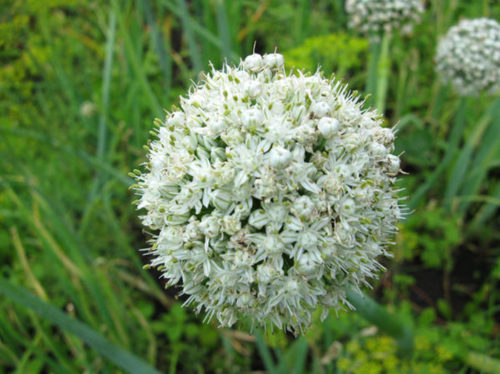
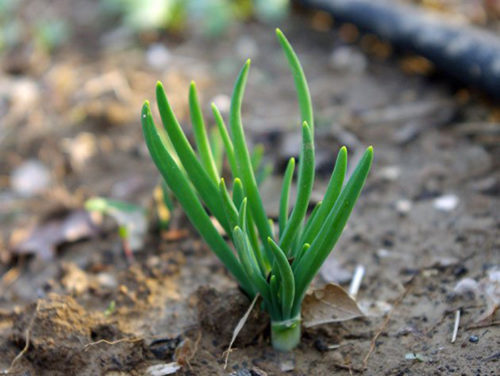

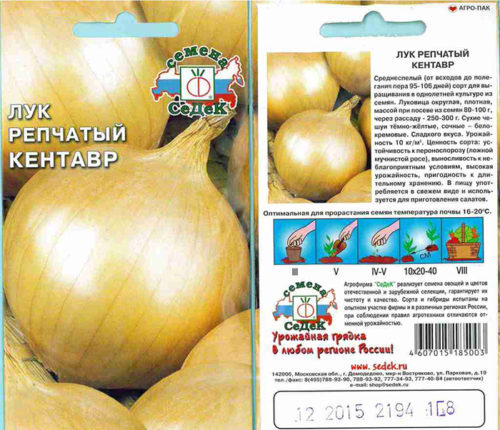
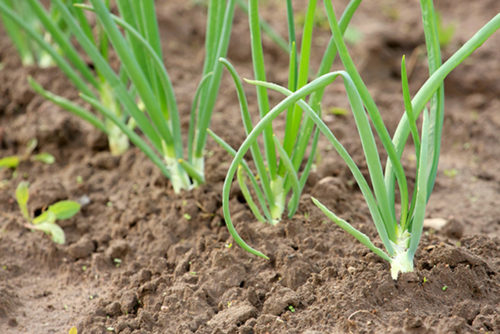
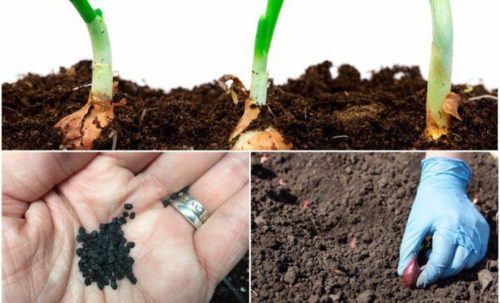
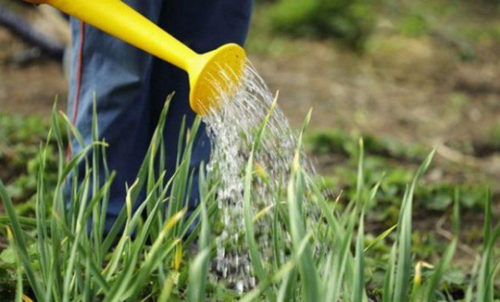
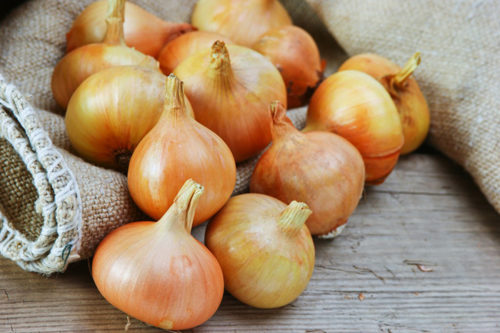
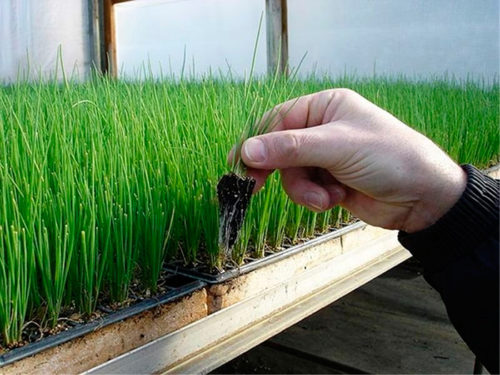
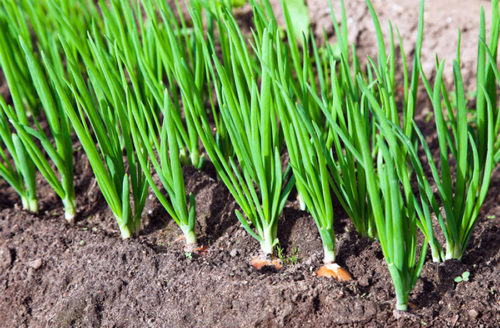












 Start a discussion ...
Start a discussion ...